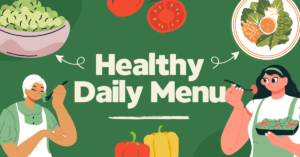Diet chart for heart patients

The Lifeline of the Body

The heart is a main organ responsible for distribut blood throughout the body. This muscular organ, roughly the size of a fist, is located slightly to the left side of the center of the casket. It functions continuously throughout a person’s life, icing that oxygen and nutrients reach every cell while removing waste products like carbon dioxide.
deconstruction of the Heart
The four chambers of Heart
1. Right Auricle Receives oxygen-free blood from the body through the superior and inferior vena cava.
2. Right Ventricle Pumps deoxygenated blood to the lungs through the pulmonary expressway.
3. Left Atrium Receives oxygenated blood from the lungs via the pulmonary modes.
4.Left Ventricle distribute oxygenated blood to the entire body through the nurb.
The heart has four gates that regulate blood flux
Tricuspid incline( between the right yard and right ventricle)
Pulmonary incline ( between the right ventricle and pulmonary expressway)
Mitral incline ( between the left yard and left ventricle)
Aortic incline ( between the left ventricle and aorta)
How the Heart Works
The heart works as a double pump. The right side sends blood to the lungs, where it gets oxygenated, while the left side pumps oxygen-rich blood to the rest of the body. This process, known as the cardiac cycle , occurs in two phases
The Circulatory System and Blood Flow
The heart is part of the circulatory system which consists of highways, modes, and capillaries. highways carry oxygen-rich blood from the heart to the body, while modes bring deoxygenated blood back to the heart. Capillaries grease the exchange of oxygen, nutrients, and waste products at the cellular position.
Electrical System of the Heart
The heart has an natural electrical system that regulates its meter. The sinoatrial( SA) knot , constantly called the natural trendsetter, initiates the shake. Electrical impulses travel through the atrioventricular( AV) knot icing the heart beats in a coordinated manner.
Common Heart conditions and Conditions
Several health conditions can affect the heart, including
Coronary expressway complaint( CAD) Narrowing of the highways due to sanctum buildup, leading to heart attacks.
Hypertension( High Blood Pressure) Increases the workload on the heart, raising the trouble of heart failure.
Arrhythmias Irregular jiffs that can be too presto, too slow, or erratic.
Heart Failure A condition where the heart ca n’t pump blood effectively.
How to Keep Your Heart Healthy
Maintaining a healthy heart requires life choices similar as
Eating a balanced diet rich in fruits, vegetables, whole grains, and spare proteins.
Regular exercise to strengthen the heart and meliorate rotation.
Avoiding smoking and devilish alcohol consumption.
Managing stress through contemplation, relaxation ways, or pursuits.
Regular medical check- ups to cover blood pressure, cholesterol, and other heart- related factors.
Conclusion
The mortal heart is an extraordinary organ that plays a vital part in sustaining life. By understanding how it functions and taking way to maintain its health, individualities can significantly reduce the trouble of heart complaint and lead healthier, longer lives.
Diet chart for heart patients
Diet

A Heart-Healthy Diet Chart: Nutrition for a Stronger Heart
A healthy diet plays a crucial role in maintaining heart health and preventing cardiovascular diseases. Heart patients need a well-balanced meal plan that is low in unhealthy fats, sodium, and processed sugars while being rich in essential nutrients. A heart-friendly diet can help manage blood pressure, cholesterol levels, and overall cardiac function. Here’s a comprehensive diet chart designed to support heart health, along with a detailed breakdown of nutritional benefits and lifestyle changes.
Importance of a Heart-Healthy Diet
The food we eat directly impacts heart health. Poor dietary habits can lead to conditions such as hypertension, obesity, diabetes, and high cholesterol, increasing the risk of heart disease. A heart-healthy diet ensures:
Improved circulation and better oxygen supply to the body.
Reduced cholesterol levels, preventing plaque buildup in arteries.
Lower blood pressure, minimizing the risk of stroke and heart failure.
Controlled blood sugar levels, preventing diabetes-related heart complications.
Better weight management, reducing strain on the heart.
General Guidelines for a Heart-Healthy Diet
Reduce Salt Intake: Excess sodium can increase blood pressure and lead to heart problems.
Limit Saturated and Trans Fats: Avoid fried foods, processed snacks, and margarine.
Increase Fiber-Rich Foods: Whole grains, legumes, and vegetables help in cholesterol management.
Consume Lean Proteins: Opt for fish, skinless poultry, and plant-based proteins like beans and tofu.
Stay Hydrated: Drink sufficient water and avoid sugary beverages and sodas.

Portion Control: Overeating can put extra stress on the heart, leading to weight gain.
Reduce Processed and Sugary Foods: Processed foods often contain high amounts of salt, unhealthy fats, and artificial additives.
Include Omega-3 Fatty Acids: Found in nuts, seeds, and fatty fish, they help reduce inflammation and promote heart health.
Comprehensive Heart-Healthy Diet Chart
Morning (6:30 AM – 7:30 AM)
1 glass of warm water with lemon or green tea (aids digestion and detoxifies the body)
5-6 almonds and walnuts (rich in omega-3 fatty acids and good fats for heart health)
1 teaspoon flaxseeds or chia seeds (help lower cholesterol levels)
Breakfast (8:00 AM – 9:00 AM)
Oatmeal with flaxseeds and fresh fruits (fiber-rich and controls cholesterol)
Whole wheat toast with avocado or peanut butter (provides healthy fats and proteins)
Low-fat yogurt with berries (probiotics support gut health, indirectly benefiting the heart)
Boiled eggs or egg whites (protein-packed and support muscle function)
Mid-Morning Snack (10:30 AM – 11:00 AM)
A bowl of fresh fruits (e.g., apples, oranges, papaya, pomegranate)
Handful of sunflower or pumpkin seeds (rich in antioxidants and magnesium)
A cup of green tea (reduces inflammation and improves circulation)
Lunch (12:30 PM – 1:30 PM)
Brown rice, quinoa, or whole wheat chapati (provides complex carbohydrates and fiber)
Grilled salmon, tofu, or lentils (protein-rich and loaded with omega-3 fatty acids)
Steamed vegetables (broccoli, spinach, carrots, and bell peppers for antioxidants and fiber)
A bowl of mixed salad with olive oil dressing (reduces bad cholesterol levels)
Buttermilk or lemon water (aids digestion and provides hydration)
Afternoon Snack (3:30 PM – 4:00 PM)
Handful of mixed nuts (almonds, walnuts, pistachios for good heart health)
A fruit smoothie (banana, berries, and yogurt for fiber and antioxidants)
Green tea or herbal tea (helps reduce cholesterol and inflammation)
Evening (5:30 PM – 6:00 PM)
Whole grain crackers with hummus (rich in fiber and protein)
Vegetable soup (low-sodium, packed with nutrients)
Roasted chickpeas (high in protein and fiber, good for heart health)
Dinner (7:30 PM – 8:30 PM)
Grilled chicken, salmon, or tofu with fresh salad
Whole wheat chapati or steamed vegetables
Quinoa with sautéed spinach and mushrooms (a nutrient-dense meal)
A glass of warm milk with turmeric (reduces inflammation and improves heart health)
Bedtime (10:00 PM – 10:30 PM)
A glass of warm water or herbal tea
1-2 soaked almonds or walnuts (to provide essential nutrients overnight)
Foods to Avoid for a Healthy Heart
1. High-Fat and Processed Meats
Red meat, sausages, and bacon contain high levels of saturated fats, increasing cholesterol levels.
2. Sugary Foods & Beverages
Sweets, cakes, sodas, and packaged juices lead to obesity and increase the risk of diabetes, which affects heart health.
3. Fried and Fast Foods
Burgers, fries, and fried chicken contain trans fats, leading to clogged arteries.
4. Excess Salt & Processed Foods
Pickles, canned soups, instant noodles, and processed snacks have high sodium levels, leading to high blood pressure.
5. Alcohol & Caffeine
Excessive alcohol consumption increases blood pressure and lipids levels. Moderate coffee intake is fine, but excess caffeine can lead to irregular heart rhythms.
Lifestyle Changes for a Healthier Heart
Regular Exercise: Engage in at least 30 minutes of physical activity daily (walking, cycling, swimming, or yoga).
Stress Management: Practice meditation, breathing exercises, or engage in hobbies to reduce stress levels.
Quit Smoking: Smoking damages blood vessels and significantly increases the risk of heart diseases.
Get Quality Sleep: Poor sleep patterns can lead to high blood pressure and heart complications.
Regular Health Check-ups: Monitor cholesterol, blood pressure, and blood sugar levels.
Conclusion
A heart-healthy diet is essential for preventing and managing cardiovascular diseases. By incorporating nutrient-rich foods, controlling portions, avoiding unhealthy fats, and making positive lifestyle choices, heart patients can improve their overall well-being. Remember, a balanced diet, coupled with physical activity and stress management, plays a crucial role in maintaining a healthy heart. Making small, consistent changes in your diet and lifestyle can lead to long-term heart health benefits, ensuring a longer and healthier life.

Diet chart for heart patients

हृदय-स्वस्थ आहार चार्ट: मजबूत हृदय के लिए पोषण
स्वस्थ आहार हृदय स्वास्थ्य को बनाए रखने और हृदय रोगों को रोकने में महत्वपूर्ण भूमिका निभाता है। हृदय रोगियों को एक संतुलित भोजन योजना की आवश्यकता होती है जिसमें आवश्यक पोषक तत्वों से भरपूर होने के साथ-साथ अस्वास्थ्यकर वसा, सोडियम और प्रसंस्कृत शर्करा कम हो। हृदय के अनुकूल आहार रक्तचाप, कोलेस्ट्रॉल के स्तर और समग्र हृदय क्रिया को प्रबंधित करने में मदद कर सकता है। यहां पोषण संबंधी लाभों और जीवनशैली में बदलावों के विस्तृत विवरण के साथ, हृदय स्वास्थ्य का समर्थन करने के लिए डिज़ाइन किया गया एक व्यापक आहार चार्ट है।
हृदय-स्वस्थ आहार का महत्व
हम जो खाना खाते हैं उसका सीधा असर दिल की सेहत पर पड़ता है। खान-पान की ख़राब आदतें उच्च रक्तचाप, मोटापा, मधुमेह और उच्च कोलेस्ट्रॉल जैसी स्थितियों को जन्म दे सकती हैं, जिससे हृदय रोग का खतरा बढ़ जाता है। हृदय-स्वस्थ आहार सुनिश्चित करता है:
रक्त परिसंचरण में सुधार और शरीर को बेहतर ऑक्सीजन की आपूर्ति।
कोलेस्ट्रॉल के स्तर को कम करता है, धमनियों में प्लाक के निर्माण को रोकता है।
निम्न रक्तचाप, स्ट्रोक और हृदय विफलता के जोखिम को कम करता है।
रक्त शर्करा के स्तर को नियंत्रित किया जाता है, जिससे मधुमेह संबंधी हृदय संबंधी जटिलताओं को रोका जा सकता है।
बेहतर वजन प्रबंधन, हृदय पर तनाव कम करना।
हृदय-स्वस्थ आहार के लिए सामान्य दिशानिर्देश
नमक का सेवन कम करें: अतिरिक्त सोडियम रक्तचाप बढ़ा सकता है और हृदय संबंधी समस्याएं पैदा कर सकता है।
संतृप्त और ट्रांस वसा सीमित करें: तले हुए खाद्य पदार्थ, प्रसंस्कृत स्नैक्स और मार्जरीन से बचें।
फाइबर युक्त खाद्य पदार्थ बढ़ाएँ: साबुत अनाज, फलियाँ और सब्जियाँ कोलेस्ट्रॉल प्रबंधन में मदद करती हैं।
लीन प्रोटीन का सेवन करें: मछली, त्वचा रहित पोल्ट्री और बीन्स और टोफू जैसे पौधे-आधारित प्रोटीन का विकल्प चुनें।
हाइड्रेटेड रहें: पर्याप्त पानी पिएं और शर्करा युक्त पेय पदार्थों और सोडा से बचें।
भाग नियंत्रण: अधिक खाने से हृदय पर अतिरिक्त तनाव पड़ सकता है, जिससे वजन बढ़ सकता है।
प्रसंस्कृत और शर्करायुक्त खाद्य पदार्थों को कम करें: प्रसंस्कृत खाद्य पदार्थों में अक्सर उच्च मात्रा में नमक, अस्वास्थ्यकर वसा और कृत्रिम योजक होते हैं।
ओमेगा-3 फैटी एसिड शामिल करें: नट्स, बीज और वसायुक्त मछली में पाए जाते हैं, वे सूजन को कम करने और हृदय स्वास्थ्य को बढ़ावा देने में मदद करते हैं।
व्यापक हृदय-स्वस्थ आहार चार्ट
प्रातः (6:30 पूर्वाह्न – 7:30 पूर्वाह्न)
नींबू या हरी चाय के साथ 1 गिलास गर्म पानी (पाचन में सहायता करता है और शरीर को डिटॉक्सीफाई करता है)
5-6 बादाम और अखरोट (ओमेगा-3 फैटी एसिड और हृदय स्वास्थ्य के लिए अच्छे वसा से भरपूर)
एक चम्मच अलसी या चिया बीज (कोलेस्ट्रॉल के स्तर को कम करने में मदद करें)
नाश्ता (सुबह 8:00 – 9:00 बजे)
अलसी और ताजे फलों के साथ दलिया (फाइबर से भरपूर और कोलेस्ट्रॉल को नियंत्रित करता है)
एवोकैडो या मूंगफली के मक्खन के साथ साबुत गेहूं का टोस्ट (स्वस्थ वसा और प्रोटीन प्रदान करता है)
जामुन के साथ कम वसा वाला दही (प्रोबायोटिक्स आंत के स्वास्थ्य का समर्थन करते हैं, अप्रत्यक्ष रूप से हृदय को लाभ पहुंचाते हैं)
उबले अंडे या अंडे की सफेदी (प्रोटीन से भरपूर और मांसपेशियों के कार्य में सहायता)
मध्य-सुबह का नाश्ता (सुबह 10:30 – 11:00 बजे)
ताजे फलों का एक कटोरा (जैसे, सेब, संतरा, पपीता, अनार)
मुट्ठी भर सूरजमुखी या कद्दू के बीज (एंटीऑक्सीडेंट और मैग्नीशियम से भरपूर)
एक कप हरी चाय (सूजन कम करती है और परिसंचरण में सुधार करती है)
दोपहर का भोजन (12:30 अपराह्न – 1:30 अपराह्न)
ब्राउन चावल, क्विनोआ, या साबुत गेहूं की चपाती (जटिल कार्बोहाइड्रेट और फाइबर प्रदान करता है)
ग्रिल्ड सैल्मन, टोफू, या दाल (प्रोटीन से भरपूर और ओमेगा-3 फैटी एसिड से भरपूर)
उबली हुई सब्जियाँ (एंटीऑक्सिडेंट और फाइबर के लिए ब्रोकोली, पालक, गाजर और शिमला मिर्च)
जैतून के तेल की ड्रेसिंग के साथ मिश्रित सलाद का एक कटोरा (खराब कोलेस्ट्रॉल के स्तर को कम करता है)
छाछ या नींबू पानी (पाचन में सहायता करता है और जलयोजन प्रदान करता है)
दोपहर का नाश्ता (3:30 अपराह्न – 4:00 अपराह्न)
मुट्ठी भर मिश्रित मेवे (दिल के अच्छे स्वास्थ्य के लिए बादाम, अखरोट, पिस्ता)
एक फल स्मूदी (फाइबर और एंटीऑक्सीडेंट के लिए केला, जामुन और दही)
हरी चाय या हर्बल चाय (कोलेस्ट्रॉल और सूजन को कम करने में मदद करती है)
शाम (5:30 अपराह्न – 6:00 अपराह्न)
ह्यूमस के साथ साबुत अनाज क्रैकर (फाइबर और प्रोटीन से भरपूर)
सब्जी का सूप (कम सोडियम, पोषक तत्वों से भरपूर)
भुने हुए चने (प्रोटीन और फाइबर से भरपूर, हृदय स्वास्थ्य के लिए अच्छे)
रात्रिभोज (शाम 7:30 – 8:30 बजे)
ताजा सलाद के साथ ग्रील्ड चिकन, सैल्मन, या टोफू
साबुत गेहूं की चपाती या उबली हुई सब्जियाँ
भूने हुए पालक और मशरूम के साथ क्विनोआ (पोषक तत्वों से भरपूर भोजन)
हल्दी वाला एक गिलास गर्म दूध (सूजन कम करता है और हृदय स्वास्थ्य में सुधार करता है)
सोने का समय (रात 10:00 बजे – रात 10:30 बजे)
एक गिलास गर्म पानी या हर्बल चाय
1-2 भीगे हुए बादाम या अखरोट (रात भर आवश्यक पोषक तत्व प्रदान करने के लिए)
स्वस्थ हृदय के लिए परहेज करने योग्य खाद्य पदार्थ
1. उच्च वसा और प्रसंस्कृत मांस
रेड मीट, सॉसेज और बेकन में उच्च स्तर की संतृप्त वसा होती है, जिससे कोलेस्ट्रॉल का स्तर बढ़ता है।
2. शर्करा युक्त खाद्य पदार्थ और पेय पदार्थ
मिठाइयाँ, केक, सोडा और पैकेज्ड जूस मोटापा बढ़ाते हैं और मधुमेह का खतरा बढ़ाते हैं, जो हृदय स्वास्थ्य को प्रभावित करता है।
3. तला हुआ और फास्ट फूड
बर्गर, फ्राइज़ और फ्राइड चिकन में ट्रांस फैट होता है, जिससे धमनियां अवरुद्ध हो जाती हैं।
4. अतिरिक्त नमक और प्रसंस्कृत खाद्य पदार्थ
अचार, डिब्बाबंद सूप, इंस्टेंट नूडल्स और प्रसंस्कृत स्नैक्स में सोडियम का स्तर उच्च होता है, जिससे उच्च रक्तचाप होता है।
5. शराब और कैफीन
अत्यधिक शराब के सेवन से रक्तचाप और लिपिड का स्तर बढ़ जाता है। मध्यम मात्रा में कॉफी का सेवन ठीक है, लेकिन अधिक कैफीन से हृदय की लय अनियमित हो सकती है।
स्वस्थ हृदय के लिए जीवनशैली में बदलाव
नियमित व्यायाम: प्रतिदिन कम से कम 30 मिनट की शारीरिक गतिविधि (पैदल चलना, साइकिल चलाना, तैराकी या योग) में संलग्न रहें।
तनाव प्रबंधन: तनाव के स्तर को कम करने के लिए ध्यान, साँस लेने के व्यायाम का अभ्यास करें या शौक से जुड़ें।
धूम्रपान छोड़ें: धूम्रपान रक्त वाहिकाओं को नुकसान पहुंचाता है और हृदय रोगों का खतरा काफी बढ़ जाता है।
गुणवत्तापूर्ण नींद लें: खराब नींद के पैटर्न से उच्च रक्तचाप और हृदय संबंधी जटिलताएँ हो सकती हैं।
नियमित स्वास्थ्य जांच: कोलेस्ट्रॉल, रक्तचाप और रक्त शर्करा के स्तर की निगरानी करें।
निष्कर्ष
हृदय रोगों की रोकथाम और प्रबंधन के लिए हृदय-स्वस्थ आहार आवश्यक है। पोषक तत्वों से भरपूर खाद्य पदार्थों को शामिल करके, मात्रा को नियंत्रित करके, अस्वास्थ्यकर वसा से परहेज करके और सकारात्मक जीवनशैली अपनाकर, हृदय रोगी अपने समग्र स्वास्थ्य में सुधार कर सकते हैं। याद रखें, शारीरिक गतिविधि और तनाव प्रबंधन के साथ संतुलित आहार, स्वस्थ हृदय बनाए रखने में महत्वपूर्ण भूमिका निभाता है। अपने आहार और जीवनशैली में छोटे, लगातार बदलाव करने से दीर्घकालिक हृदय स्वास्थ्य लाभ हो सकते हैं, जिससे लंबा और स्वस्थ जीवन सुनिश्चित हो सकता है।
Diet chart for heart patients 
